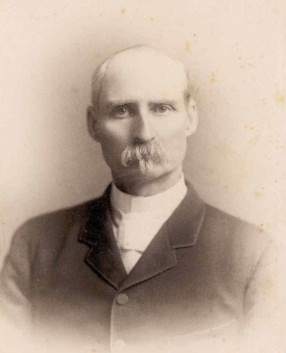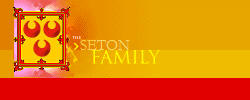|

Andrew Seton
of Nova Scotia, of the Seton's of Barnes
Andrew
Seeton was the eldest son of James Seton (or Seaton/Seeton) and
Martha Crawford of Ulster, Ireland, and as such the representation
of this line of the Seton Family from the House of Seton of Barnes
and Hailes follows
his descent.
The Seeton's in Ireland and Nova
Scotia then, descend from the younger son of Sir John
Seton, 4th of Barnes, John Seton (or Seaton, younger of Barnes)
who married m.
Anna Lothian (married by the Dean, Mr. William Annand on 30th May, 1684) and
who settled
in Ireland. Their grandson, Thomas Seaton is the ancestor. The Seton's of Barnes having
long held an interest and lands, in Ireland, and who
were likewise long-active Mason's. It is of no
surprise then that our family that had settled in Ireland and
continued the Masonic traditions there, brought them
to Nova Scotia.
Andrew was born in 1812, in Ulster, and came with his
parents and three other siblings on the ocean voyage from Belfast
to St. John, New Brunswick, Canada in 1822. He had commenced
his Presbyterian education in Ireland before arriving in Canada
and there finished his studies under the tutelage of local Masonry
men prominent during that period in Nova Scotia.
All of his
brothers grew and did particularly well, and Andrew was no
exception, he and his next sibling James bought and sold
substantial land in the north-western part of the British Colony
around what at the time was called Londonderry, or Great Village
(now called Glenholm) near the city of Truro, eventually settling
in the centre-east in what is still known as the Seeton Farm in
Meagher's Grant, Nova Scotia, near Musquodoboit Harbour.
Andrew and his brother James bought the
Seeton Farm lands from Daniel
Lydiard about 1854, and were also engaged in Merchant business in
Halifax which the younger brothers Joseph and Robert B. Seeton
were noted for later. There was a tradition for Scottish
families to keep hereditary ties, and the Seeton's were no
exception: as descendants of the Seton's of Barnes, they
maintained ties within the other prominent families who had likewise
originated from Scotland.
Despite the fall of
the House of Seton in Scotland during the failed support of the
Royal House of Stuart during the century before, many of the Seton
family kept open communications and business relationships.
The Seeton's of Nova Scotia and the Seton's of New York, for
example, (the Houses of Barnes and Parbroath respectively),
maintained active ties.
Andrew Seeton began the Merchant
trading between Halifax and New York and Boston that his younger
brothers expanded upon, and he and his brothers were all active
Mason's. He married Miss Matilda Porter at St. John, New
Brunswick on October 4, 1838 by the Rev'd R. Wilson of St.
Andrew's and had a sizeable family. | 
